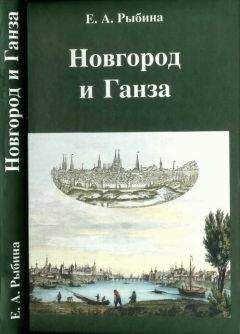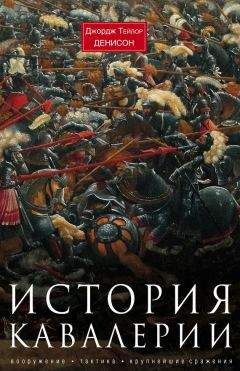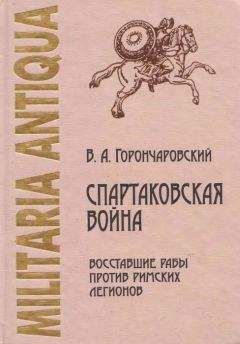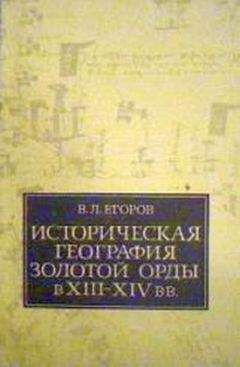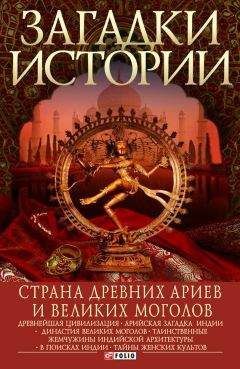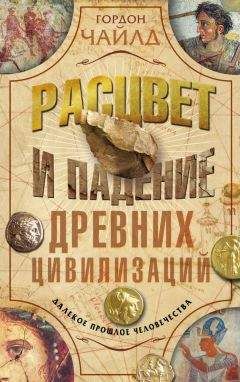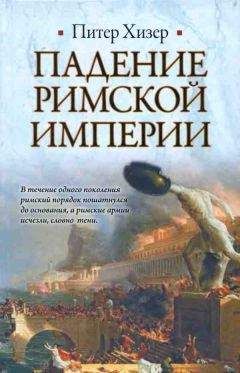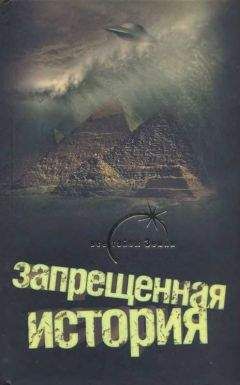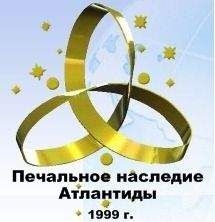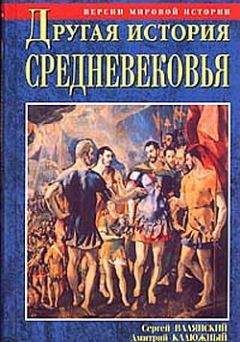Ричард Томпсон, - Неизвестная история человечества
Скачивание начинается... Если скачивание не началось автоматически, пожалуйста нажмите на эту ссылку.
Жалоба
Напишите нам, и мы в срочном порядке примем меры.
Описание книги "Неизвестная история человечества"
Описание и краткое содержание "Неизвестная история человечества" читать бесплатно онлайн.
В «Неизвестной истории человечества» Майкл Кремо и Ричард Томпсон приводят поразительные данные, о которых научная общественность была когда‑то осведомлена. Долгое время эти сведения были вне поля зрения ученых благодаря так называемой «фильтрации знаний». Суть сводится к тому, что современный человек существовал на Земле на протяжении многих миллионов лет.
Чтобы извлечь эти данные на свет божий, авторам пришлось выполнить колоссальный объем исследовательской и аналитической работы, результаты которой столь впечатляющи, изложены столь подробно, что уже поэтому достойны самого пристального внимания. Настоящая работа предназначается широкому кругу читателей. Мы также надеемся, что она привлечет внимание и непредубежденных специалистов.
Leakey, L. S. В., Tobias, P. V., and Napier, J. R. (1964) A new species of the genus Homo from Olduvai Gorge. Nature, 202: 7‑9.
Leakey, M. D. (1971) Olduvai Gorge. Vol. 3. Excavations in BedsIandII, 1960–1963. Cambridge, Cambridge University.
Leakey, M. D. (1978) Olduvai fossil hominids: their stratigraphic positions and locations. In Jolly, C. J., ed. Early Hominids of Africa. London, Duckworth, pp. 3‑16.
Leakey, M. D. (1979) Footprints in the ashes of time. National Geographic155: 446–457.
Leakey, R. E. (1973a) Evidence for an advanced Plio‑Pleistocene hominid from East Rudolf, Kenya. Nature, 242: 447–450.
Leakey, R. E. (1973b) Skull 1470. National Geographic, 143: 819–829.
Leakey, R.E. (1973с) Further evidence of Lower Pleistocene hominids from East Rudolf, North Kenya, 1972. Nature, 242: 170–173.
Leakey, R. E. (1984) One Life. Salem, New Hampshire, Salem House.
Leakey, R. E., and Lewin, R. (1977) Origins. New York, Dutton.
Leakey, R. E., and Lewin, R. (1978) People of the Lake: Mankind and ItsBeginnings. Garden City, Anchor Press.
Lee, R. E. (1983) «For I have been a man, and that means to have been a fighter.» Anthropological Journal of Canada, 21: 11‑13.
Lee, Т. E. (1964) Canada's national disgrace. Anthropological Journal of Canada 27,»; 28‑31.
Lee, Т. E. (1966a) Untitled editorial note on the Sheguiandah .AnthropologicalJournal of Canada. 4(4): 18‑19.
Lee, Т. E. (1966b) Untitled editorial note on the Sheguiandah .AnthropologicalJournal of Canada, 4(2): 50.
Lee, Т. Е. (1968) The question of Indian origins, again. Anthropological Journalof Canada, 6(4): 22‑32.
Lee, Т. E. (1972) Sheguiandah in retrospect. Anthropological Journal of Canada, 10(1): 28‑30.
Lee, Т. E. (1977) Introduction to Carter, G. F., On the antiquity of man in America. Anthropological Journal of Canada, 15(1): 2‑4.
Lee, Т. Е. (1981) A weasel in the woodpile. Anthropological Journal of Canada, 19(2): 18‑19.
Lee, T. E. (1983) The antiquity of the Sheguiandah site. Anthropological Journal of Canada, 21: 46‑73.
Legge. A. J. (1986) Seeds of discontent. In Gowlett, J.A. J„and Hedges, R. E. M., eds. Archaeological Results from Accelerator Dating. Oxford, Oxford University Committee for Archaeology, pp. 13‑21.
Leriche, M. (1922) Les terrains tertiaires de la Belgique. Congres GeologiqueInternational (13e, Bruxelles), Livret – Guide des Excursions en Belgique, A4: 1‑46.
Lewis, 0. J. (1980) The joints of the evolving foot, part III. Journal of Anatomy, 131: 275–298.
Li, P., Qian, F., Ma, X., Pu, Q., Xing, L., and Ju, S. (1976) A preliminary study of the age of Yuanmou man by paleomagnetic techniques. Scientia Sinica, 6: 579–591.
Li, R., and Lin, D. (1979) Geochemistry of amino acid of fossil bones from deposits of Peking man, Lantian man, and Yuanmou man in China. ScientiaGeologica Sinica, 1: 56‑61.
Liu, D., and Ding, M. (1983) Discussion on the age of Yuanmou man. ActaAnthropologica Sinica, 2(1): 40‑48.
Lisowski, F. P., Albrecht, G. H., and Oxnard, C. E. (1974). The form of the talus in some higher primates: a multivariate study. American Journal of PhysicalAnthropology, 41: 191–216.
Lohest, M., Fourmarier, P., Hamal‑Nandrin, J., Fraipont, C., and Capitan, L. (1923) Les silex d'lpswich: conclusions do 1'enquete de 1'Institut International d'Anthropologic. Revue Anthropologique, 33: 44‑67. (*)
Longin, R. (1971) New method of collagen extraction for radiocarbon dating. Nature, 230: 241–242.
Lorenzo, J. L. (1978) Early man research in the American hemisphere: appraisal and perspectives. In Bryan, A. L., ed. Early Man in America From a Circum‑Pacific Perspective. Edmonton. Archaeological Researches International, pp. 1‑9.
Lorenzo, J. L., and Mirambell, L. (1986) Preliminary report on archaeological and paleoenvironmental studies in the area of El Cedral, San Luis Potosi, Mexico 1977–1980. In Bryan, A. L., ed. New Evidence/or the Pleistocene Peoplingof the Americas. Orono, Maine, Center for the Study of Early Man, pp. 106–111.
Lovejoy, С. О. (1988) Evolution of human walking. Scientific American, 259(5): 118–125.
Lyell, Charles (1863) Antiquity of Man. London, John Murray.
Ma, X., Qian, F., Li, P., and Ju, S. (1978) Paleomagnetic dating of Lantian man. Vertebrate PalAsiatica. 16(4): 238–243.
MacCurdy, G. G. (1924a) Human Origins: A Manual of Prehistory. Vol. 3. The OldStone Age and the Dawn of Man and His Arts. New York, D. Appleton.
MacCurdy, G. G. (1924b) What is an eolith? Natural History. 24: 656–658.
Macalister, R.A. S. (1921) Textbook of'European Archaeology. Vol. 1. PaleolithicPeriod. Cambridge, Cambridge University.
Maglio, V. J. (1972) Vertebrate faunas and chronology of hominid‑bearing sediments east of Lake Rudolf,, Kenya. Nature, 239: 379–385.
Maglio, V. J. (1973) Origin and evolution of the Elephantidae. American Philosophical Society Transactions, 63: 1‑149.
Malde, H. E., and Steen‑McIntyre, V. (1981) Reply to comments by C. Irwin‑Williams: archaeological site, Valsequillo, Mexico. Quaternary Research, /6:418–421.
Mallery, A. H. (1951) Lost America: The Story of Iron‑Age Civilization Prior toColumbus. Washington, D. C., Overlook. Mammoth Trumpet (1984) Life in ice age Chile. /(//• 1.
Marks, P. (1953) Preliminary note on the discovery of a new jaw ofMeganthropus von Koenigswald in the lower Middle Pleistocene ofSangiran, central Java. Indonesian Journal of Natural Science, 109(1); 26‑33.
Marshall, L. G., Pascual, R., Curtis, G. H., and Drake, R. E. (1977) South American geochronology: radiometric time scale for Middle to Late Tertiary mammal‑bearing horizons in Patagonia. Science, 195: 1325–1328.
Marshall, L. G., Webb, S. D., Sepkoski, Jr., J. J. and Raup, D. M, (1982) Mammalian evolution and the great American interchange. Science. 215: 1351–1357.
Marzke, M. W. (1983) Joint function and grips of the Australopithecus afarensis hand, with special reference to the region of the capitate. Journal of Human Evolution. 12: 197–211.
McHenry, H. M. (1972) Postcranial skeleton of Early Pleistocene hominids. Ph.D. thesis, Harvard University.
McHenry, H. M. (1973) Early hominid humerus from East Rudolf, Kenya. Science, /«0:739–741. McHenry, H.M., and Corruccini, R. S. (1975) Distal humerus in hominoid evolution. Folia Primatologica 23: 227–244.
Meister, W. J. (1968) Discovery oftrilobite fossils in shod footprint of human in «Trilobite Bed» – a Cambrian formation. Antelope Springs, Utah. Creation Research Quarterly. 5(3): 97‑102.
Meldau, F. J. (1964) Why We Believe in Creation, Not in Evolution. Denver, Christian Victory.
Melleville, M. (1862a) Foreign intelligence. The Geologist, 5: 145–148.
Melleville, M. (1862b) Note sur un objet travaille de main d'homme trouve dans les lignites du Laonnois. Revue Archeologique. 5: 181–186. (*)
Merriam, J. C. (1938) The Published Papers of John Campbell Merriam. Vol. IV. Washington, D. C., Carnegie Institution.
Michels, J. W. (1973) Dating Methods in Archaeology. New York, Seminar Press.
Millar, Ronald (1972) The Piltdown Men. London, Victor Gollancz.
Miller, M. E., and Caccioli, W. (1986) The results of the New World Explorers Society Himalayan Yeti Expedition. Cryptozoology. 5: 81‑84.
Minshall, H. L. (1989) Buchanan Canyon: Ancient Human Presence in theAmericas. San Marcos, Slawson Communications.
Moir, J. R. (1916) Pre‑Boulder Clay man. Nature, 98: 109.
Moir, J. R. (1917a) A series of mineralized bone implements of a primitive type from below the base of the Red and Coralline Crags of Suffolk. Proceedingsof the Prehistoric Society of East Anglia, 2: 116–131.
Moir, J. R. (1917b) Apiece of humanly‑shaped wood from the Cromer Forest Bed. Man. 17: 172–173.
Moir. J. R. (1919) A few notes on the sub‑Crag flint implements. Proceedings ofthe Prehistoric Society of East Anglia, 3:158–161.
Moir, J. R. (1923) An early palaeolith from the glacial till at Sidestrand, Norfolk. The Antiquaries Journal, 3: 135–137.
Moir, J. R. (1924) Tertiary man in England. Natural History. 24: 637–654.
Moir, J. R. (1927) The Antiquity of Man in East Anglia. Cambridge, Cambridge University.
Moir, J. R. (1929) A remarkable object from beneath the Red Crag. Man, 29: 62‑65.
Moir, J. R. (1935) The age of the pre‑Crag flint implements. Journal of the RoyalAnthropological Institute, 65: 343–364.
Mongait, A. (1959) Archaeology in the U.S.S.R. Moscow, Foreign Languages Publishing House.
Morlan, R. E. (1986) Pleistocene archaeology in Old Crow Basin: a critical reappraisal. In Bryan, A. L… cd. New Evidence for the Pleistocene Peoplingof the Americas. Orono, Maine, Center for the Study of Early Man, pp. 27‑48.
Mozino, J. M. (1970) Noticias de Nulka: An Account of Nootka Sound in /792. Translated and edited by Iris Higbie Wilson. Seattle, University of Washington.
Napier, J. R. (1962) Fossil hand bones from Olduvai Gorge. Nature. 196: 400–411.
Napier, J. R. (1973) Bigfoot: The Yeti and Sasqualch in Myth and Reality. New York, Dutton.
Nelson, D. E., Vogel, J. S., Southon, J. R., and Brown, T. A. (1986) Accelerator radiocarbon dating at SFU. Radiocarbon 28: 215–222.
New York Times (1988) Fossil hands in S. African cave may upset ideas on evolution. May 6, p. A‑12.
New York Times News Service (1990) 17‑million‑year‑old leaf fossil yields strands of DNA. San Diego Union, April 12, p. A‑2.
Newell, N. D. (1959) Symposium on fifty years of paleontology. Adequacy of the fossil record. Journal of Paleontology, 33: 488–499.
Newton, E. T. (1895) On a human skull and limb‑bones found in the Paleolithic terrace‑gravel at Galley Hill, Kent. Quarterly Journal of the GeologicalSociety of London. 51: 505‑26.
Nilsson, T. (1983) The Pleistocene, Dordrecht, D. Reidel.
Noctling, F. (1894) On the occurrence of chipped flints in the Upper Miocene of Burma. Records of the Geological Survey of India. 27: 101–103.
Norris, R. M. (1976) Geology of California. New York, John Wiley.
О ' Connell, P. (1969) Science of Today and the Problems of Genesis. Hawthorne, Christian Book Club of America.
Oakley, K. P. (1954) Evidence of fire in South African cave deposits. Nature, 174. 261–262.
Oakley, К. Р. (1956) Fire as a Paleolithic tool and weapon. Proceedings of the Prehistoric Society, New Series, 21: 36‑48.
Oakley, К, P. (1957) The dating of the Broken Hill, Florisbad, and Saldanha skulls. /nClark, J. D., ed. Third Pan‑African Congress on Prehistory. London, Chatto and Windus, pp. 76‑79.
Oakley, K. P. (1958) Physical Anthropology in the British Museum. In Roberts, D. F., ed. The Scope of Physical Anthropology and Its Place in Academic Studies.New York, Wenner Gren Foundation for Anthropological Research, pp. 51‑54.
Oakley, K. P. (1961) Man the Toolmaker. London, British Museum (Natural History).
Oakley, K. P. (1974) Revised dating of the Kanjera hominids. Journal of HumanEvolution, 3: 257–258.
Oakley, К. Р. (1975)Areconsiderationofthedateof the Kanamjaw…/o«r/ta/o/ Archeological Science, 2: 151–152.
Oakley, К. Р. (1980) Relative dating of the fossil hominids of Europe. Bulletin ofthe British Museum (Natural History), Geology Series, 34(1): 1‑63.
Oakley, K. P., Campbell, В. G., and Molleson, T. I. (1975) Catalogue of FossilHominids. Part III. Americas, Asia, Australasia. London, British Museum.
Oakley, K. P., Campbell, B. G„and Molleson, T. I. (1977) Catalogue of FossilHominids. Part I. Africa, 2nd edition. London, British Museum.
Oakley, K. P., and Hoskins, C. R. (1950) New evidence on the antiquity of Piltdown man. Nature, 165: 379–382.
Oakley, K. P., and Montagu, M. F.A. (1949) A re‑consideration of the Galley Hill skeleton. Bulletin of the British Museum (Natural History), Geology 1(2)‑ 25‑46.
Obermaier, H. (1924) Fossil Man in Spain.New Haven, Yale University.
Ogden, J. G. (1977) The use and abuse of radiocarbon dating. Annals of the NewYork Academy of Sciences, 288: 167–173.
Okladinov, A. P., and Ragozin, L. A. (1984) The riddle of Ulalinka. SovietAnthropology and Archaeology, Summer 1984, pp. 3‑20.
Osborn, H. F. (1910) The Age of Mammals. New York, Macmillan.
Osborn, H. F. (1916) Men of the Old Stone Age. New York, Charles Scribner's Sons.
Osborn, H. F. (1921) The Pliocene man of Foxhall in EastAnglia. Natural History21: 565–576.
Osborn, H. F. (1927) Man Rises to Parnassus. London, Oxford University.
Osborn, H. F. (1928) Man Rises to Parnassus, 2nd edition. Princeton, Princeton University.
Oxnard, С. Е. (1968) A note on the fragmentary Sterkfontein scapula. American Journal of Physical Anthropology, 28: 213–217.
Oxnard, С. Е. (1972) Some African fossil foot bones: a note on the interpolation of fossils into a matrix of extant species. American Journal of PhysicalAnthropology 37: 3‑12.
Подписывайтесь на наши страницы в социальных сетях.
Будьте в курсе последних книжных новинок, комментируйте, обсуждайте. Мы ждём Вас!
Похожие книги на "Неизвестная история человечества"
Книги похожие на "Неизвестная история человечества" читать онлайн или скачать бесплатно полные версии.
Мы рекомендуем Вам зарегистрироваться либо войти на сайт под своим именем.
Отзывы о "Ричард Томпсон, - Неизвестная история человечества"
Отзывы читателей о книге "Неизвестная история человечества", комментарии и мнения людей о произведении.








